
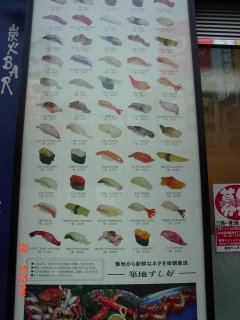

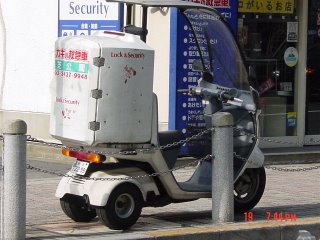


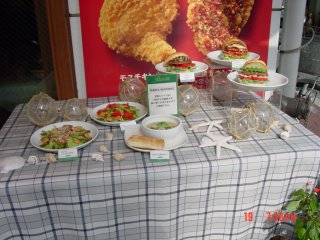
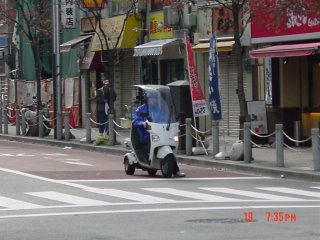
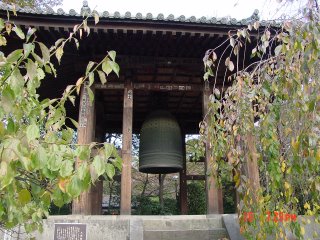
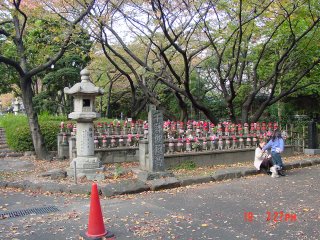

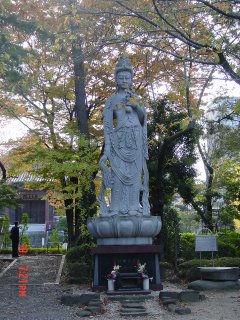
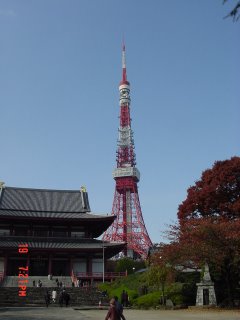

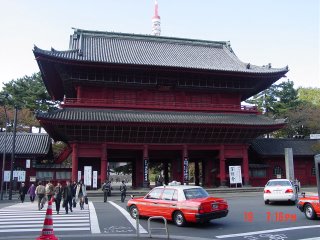
From 5:30-8:30: I walked to the Temple located next to my hotel. I loved the 6:00 service and seeing the monks on daily routines such as cleaning and preparing to sell things to tourists. In the summer, I will research the ancient beliefs in Japan. I am fascinated by the peace the young monks project. I found out the majority of monks in this temple are from 18-25 years of age. I saw several women as monks also. I do not when, but I need to go up the Tokyo Tower sometime before I leave.
9:30-11:30 Friday November 25: This was the first day we had to make choices. The selection in the morning allowed me the following choices:
1. Special Education: Shigeru Narita, Professor Hyogo University of Teacher Education
2. Math Education: Eizo Nagazaki, Curriculum Director, National Institute for Educational Policy and Research
3. Women's Status in Japan: Mariko Bando, Director, Research Institute for Gender Equality
4. Peace Education: Koji Ikeda, Chairman, Yokosuka Disabled Veterans Association, Tomoko Yanagi, Teacher, Hiroshima, Misuzugada High School. Moderator: David H. Satherwhite, Japan-United States Educational Commission
In Oklahoma, I signed for Peace Education, but Mrs. Inoguchi presentation made me change my mind. I wanted to hear more about gender equality in Japan and I went to Women's Status in Japan. Mrs. Bando gave us a historical perspective and the current changes in this area. The foundation of the difference started with availability of education. Mrs. Bando said that in the past women could not go to school after age 12. Then, their academic challenge in schools was lower. If they attended college, they had to attend Women's Colleges, but no co-ed. After the Constitution: 96% of girls go to high school and many of them go to college. They will soon match the male enrollment rate. Women live longer 85.6 years old, men: 78.6. Their diet is good: Not great amounts of oil or sugar and they do some exercise.
The problem educated women face now is "no equal opportunity to use abilities in the work force." They leave the working force by age 30 to have their first child. They have to stay home and take care of their children for the first three years of life. The policies support, either mother or father 'one year leave of absence for the first year of life of a child." 70% of women leave their jobs. Because of this, employeers do not want to invest training time and money to help women move up the ladder. They loose their seniority after age 30. There is 60 years old compulsory retirement age. They are hoping to move it to 65 in the future.
Another problem Japan faces due to the "3 year rule for women": Young women are choosing not to have babies. Japan's population is aging. Women are not getting married until they are 27 years old. Men wait until they are 29. 54% of women, age 25-29 never get married because it is difficult to have work and family. Some do so if they have extended family support. There is a lack of childcare in Japan.
If women want to go back to work at age 40, they cannot aspire to get managerial jobs, only part time work.
How can women change their situation in Japan? Women are becoming a politican force. 23/408 elected were women last year. Mrs. Inoguchi is not as influential as she should be, but at least she is an important part of the Diet now.
Besides the inequality of opportunity to use ability in the work force, Japan is also changing in other areas such sexual and domestic abuse and violence. Now they have laws such as the antidomestic violence law and sex with minors and pornography are prohibited by law. Japan also has long term insurance: Home health care first and nursing home coverage is divided by 10% covered by the individual and 90% by insurance.
Concerning the divorce rate in Japan, Mrs. Bando said that 200,000 couples divorced last year. The surprise was women are asking for divorce. After divorce, some women go on welfare. 90% of divorces are in agreement from both parties. Only 1% goes to court. Husbands do not pay anything.
Japan has a problem with sexual harrasment on the job. Employers are encouraged to deal with it and discourage it. It takes 10 years for the courts to deal with this type of cases
Regarding childcare; a great need in Japan; there are none for the first 3 years of life. You either use your extended family or stay at home. At three years, there are 23,000 daycare centers with huge waiting lists
Post-Trip Reflection
I realized why children want to be child care workers as their number one option after high school. This is a good job possibility. What I still wonder is why there are so many male teachers if education is the only place women can go back and regain their status after the three years rule.
I am also puzzled about the reality of a geisha today. The red district is still doing booming business after dark. Men drink too much and do not go back home for days. How are Japanese women handling this? How does a single mom make in Japan? What is their welfare for single women with children like? I did see men homeless, but I did not see any women on the streets.
I felt I had made a mistake taking this option because I would like to have gone to the Peace Seminar; but I learned a lot and for the Peace Seminar, I can contact the people who presented and ask questions.
11:30-1:00 Buffet lunch at the hotel
1:00-3:00 I had a choice between two project resources: The Arts and Japan-U.S. Collaborative Environmental Education; Master Teacher Program, Edward Jones, Senior Researcher, Tama University.
I had a very difficult time with this choice because my follow-on plan is on the arts. I also have students interested in solving global warming so I made what I thought to be a best decision: Environmental Seminar.
Most of the seminar information was for people who had not read the website. I felt dissapointed because I wondered what I was missing that could help me at my festival. In this seminar, I learned about future city, which is also in the website, I just had not read it. I realized that I could be the master teacher regarless if I do not have background in science. There must be a JFMF teacher in the team to apply. I also learned that Japanese are slow to start but persistant with this program. US partners are enthusiastic at first, but do not follow through. I also learned that "Internet ability" is defined with a different perspective: the Japanese underate themselves and the Americans overate themselves
All information about this program can be found at http://www.fulbrightmemorialfund.jp/mtpmain/index.htm. Below are some highlights from their Global Knowledge Creating Web: http://www.fulbrightmemorialfund.jp/mtpmain/philos1.htm.
The Fulbright Memorial Fund Master Teacher Program (MTP) is a major bi-national program of inquiry-based collaborative education. In the past five years, it has brought together students and teachers from two hundred schools in Japan and the United States for educational exchanges and online learning activities. The MTP is fully funded by the Government of Japan and operates in accord with Japan's long term educational plans.
Consequently it seeks to develop the resources needed to effectively implement the new "Period for Integrated Studies" initiated by Japan's Central Council on Education. The Council instituted this proposal, because it recognized that current educational practices in Japan tend to foster the consumption of information through rote memorization at the expense of innovation and creativity. The Council wants schools to move beyond this to provide students with an education that enhances their "zest for living" and provides them with "room for growth."
From their online application: http://www.fulbrightmemorialfund.jp/masterteacher/index.html. The Japan Fulbright Memorial Fund Master Teacher Program is undertaking its eighth year of exchange programs in collaborative environmental education using information technology. Under this program we invite JFMF past participants from the United States and Japan to organize school teams to participate in an inquiry-based education process that combines exchange visits with the use of information technology to carry out ongoing environmental education activities. The MTP program is designed to encompass both primary and secondary level schools.-(They want ALL inclusive teams)
The program combines an overall unifying project with teacher-developed partner-school pair projects. The unifying project is a biodiversity survey, called BUGS & Soil. Participants develop their partner-school pair projects based on the project areas listed in the application form project concept page. Once a concept is approved, the partner teams will develop, refine and implement it through a collaborative effort. The program's goal is to create a viable system of international collaborative learning that combines off-line experiential learning with on-line educational information exchanges.
Evening Program: This started the weekend on our own. While US educators were taking trips to Hiroshima, Kamakura, Kyoto, et. I went to dinner with Mark and Brian. We took the subway for the first time on our own. A nice Japanese man guided us and we went to Shinjuko, where the movie Lost in Translation was filmed, after we ate in Roppongi at a sushi place. They did not serve wasabi with sushi. I felt I was not going to be able to survive in Yanagawa. I could eat raw fish with wasabi, but not without it. Mark told me they had wasabi in the rice, but it is not the same as killing my palate with wasabi. I think I just do not like the consistency and smell of raw fish and nori (seaweed). Wasabi helps hide those flavors. Brian had found a place where I could blog for an hour for the same price they were charging me for 30 minutes at the hotel. I spent sometime blogging with Brian before returning to our hotels.
Final Friday's Reflection
On Friday I went to two seminars. The first one was on Japanese Women Today and the second one was on Environmental opportunities with the Master Teacher Program. Both were interesting, but very long. I was a few minutes with Mark and Brian, but I was so tired, I went to sleep early



 Saturday, November 26: Day on our own: I was tempted to go to an Ikebana and Tea Ceremony workshops available at about $50 per seminar, but I decided to spend the day with Mark and Brian.
Saturday, November 26: Day on our own: I was tempted to go to an Ikebana and Tea Ceremony workshops available at about $50 per seminar, but I decided to spend the day with Mark and Brian.In the morning, I heard about Mark and Brian's Japanese adventure with our friend Fumitaka. They visited Mount Fuji, Osaka, and Kyoto. I saw their pictures and heard their stories about hotels, the bullet train ride, the food, Fumitka's generosity and love for pictures and video and their a few hours of adventure on their own. Fumitaka had been with them almost everyday since they arrived. Mark, Brian and I took the subway for the first time on our own. At first is was kind of difficult to decide what botton to push, but since some of the directions are in English, we were Ok and went to Ginza, an amazing shopping area. Everything was very expensive, for example a pair of $150 jeans is being sold for over $300 dollars. The department stores were amazing. The quality of the displays was great. I saw great looking food and fruits (so far, every fruit I have tasted is sweet and perfectly chilled).

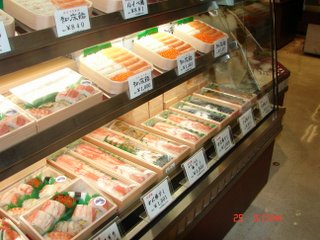 The streets of Tokyo were spotless. They have 1000's of people who moved in an orderly fashion. If I saw a foreign looking face, it was a member of my group. That is really weird. The population seems homogeneous. The cars drive as the population, in an orderly, quiet way. There are fake dishes in front of every restaurant. The subway is as all in Tokyo, orderly and spotless. Young Japanese girls are noisy from time to time, but most of the time the noise comes from our groups. I like Tokyo, but I think it would be difficult to live here because of the language and cultural barriers.
The streets of Tokyo were spotless. They have 1000's of people who moved in an orderly fashion. If I saw a foreign looking face, it was a member of my group. That is really weird. The population seems homogeneous. The cars drive as the population, in an orderly, quiet way. There are fake dishes in front of every restaurant. The subway is as all in Tokyo, orderly and spotless. Young Japanese girls are noisy from time to time, but most of the time the noise comes from our groups. I like Tokyo, but I think it would be difficult to live here because of the language and cultural barriers. 
In the evening we went Roppongi again to eat sushi at Brian favorite sushi place. I was so tired, I went to bed at about 11:00
I slept for the first time until 3:30. I felt rested, but I also felt like I got off a cruise ship.
I will not be able to continue writing from Yanagawa because they do no have Internet connection at the hotel and the guide said that she did not know if they had Internet cafes.
So far the experience is amazing. I love being here, although the food is still something I am not really knowing how to take at times. I do not like fish that tastes like fish. They seem to place seaweed on everything. I know with time I will get use to eating healthy.
Flat Stanley is doing ok. I did not place pictures of the trip until my return to the USA because the Internet cost was going to be too much.
No comments:
Post a Comment